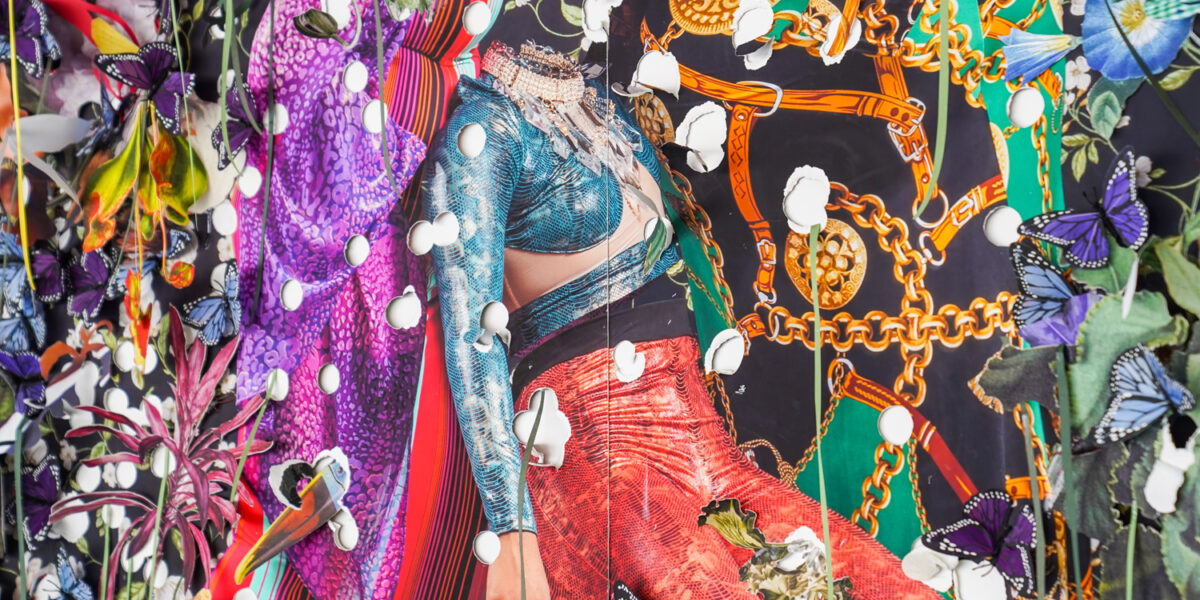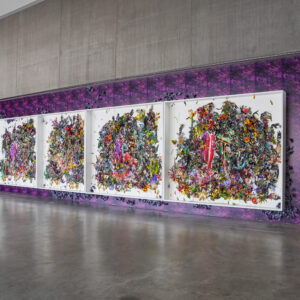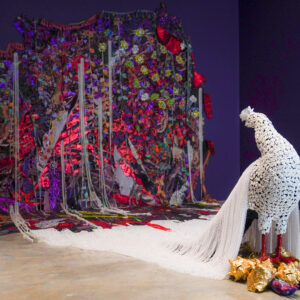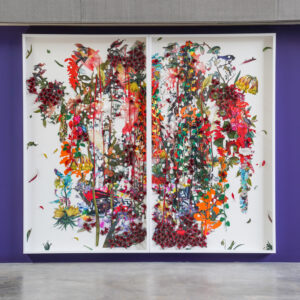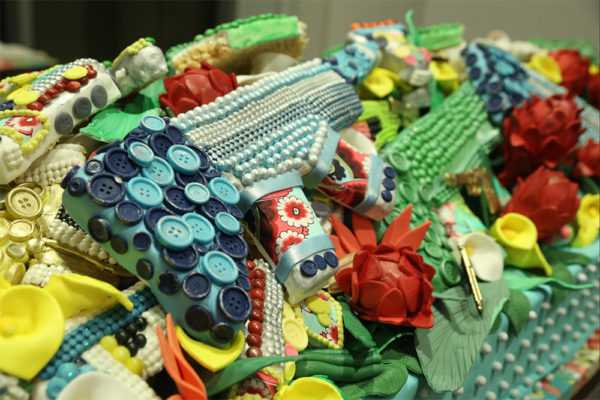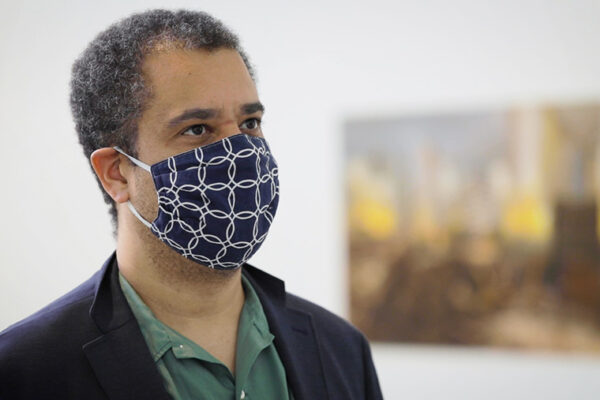Flowers rise, butterflies descend. A snake slithers past an abandoned high heel. Ghostly eyes peer out from beneath the foliage.
“Here things are growing, but they are also dying,” says artist Ebony G. Patterson. “This garden is filled with beauty, but it is also filled with tragedy.”
Patterson, MFA ’06, is discussing “…and the dew cracks the earth, in five acts of lamentation…between the cuts…beneath the leaves…below the soil…,” a massive five-panel paper collage created as part of “…when the cuts erupt…the garden rings…and the warning is a wailing…,” her new exhibition at the Contemporary Art Museum St. Louis. Stretching across the museum’s 60-foot Project Wall, the piece is bursting with incident and energy — a raucous tangle of botanical, ornithological and herpetological life.
Yet beneath the flowers, weeds erupt. Three headless figures, richly dressed in spotless purples, reds and greens, enact scenes of lamentation. They raise hands to the sky. They collapse to the ground. They lean to one another in support. Small white circles riddle the tableau like bullet holes.
Patterson, now on faculty at the School of the Art Institute of Chicago, often combines lush, seductive textures with critical explorations of race, class and gender. “…when they grow up…,” her 2015 installation for the Studio Museum in Harlem, centered on violence committed against young people of color. “…in times like these…,” a special one-night-only artwork commissioned in 2016 by WashU’s Mildred Lane Kemper Art Museum, featured a coffin-sized cake covered in sugar flowers and candy guns.
Patterson describes “…and the dew cracks the earth” as “a meditation on the labor of mourning.” She adds: “There’s a wailing that happens that signals your entry into the world, and there’s a wailing that happens when you have exited. These sounds are often carried by women.”
A similar elegiac opulence permeates “…between the stems sits a red cap above and below crown imperials….” In scale, palette and composition, this large diptych both evokes and teases the conventions of gestural painting. Colors swirl, compete and coalesce; stems and vines echo expressionist drips. Yet here too there is violence. Built from paper shards — some sliced clean, others roughly torn — Patterson’s garden seems to symbolize the ruthless splendor of nature itself.
Rounding out the new exhibition is the installation “when the land is in plumage….” A spot-lit peacock emerges from a darkly glittering landscape, head twisting backward to observe its own magnificent train. White beads stream off its back like water, oozing up the walls and collapsing distinctions between figure and ground.
“I made this work thinking about the idea that somehow the land holds the secrets, that the land also holds the truth,” Patterson says. “And what if we were able to pick up the land, and to look underneath it, to look in between it, to see all of the mysteries that the beauty on top holds?
“What would that then tell us about the truth of the spaces that we live within and exist in?” Patterson asks. “What would that tell us about the truth of the histories that have been erased?”
Ebony G. Patterson’s “…when the cuts erupt…the garden rings…and the warning is a wailing…” remains on view at the Contemporary Art Museum St. Louis through Feb. 21, 2021. For more information, visit camstl.org.
